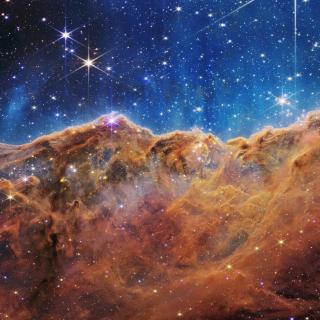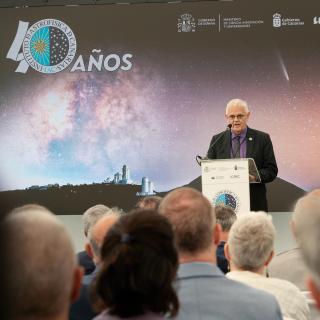As if it were one of the known Russian dolls, a group of astronomers, led by researchers at the Instituto de Astrofísica de Canarias, (IAC) has found the first known case of three supernova remnants one inside the other. Using the programme BUBBLY, a method developed within the group for detecting huge expanding bubbles of gas in interstellar space, they were observing the galaxy M33 in our Local Group of galaxies and found example of a triple-bubble. The results, which were published yesterday in the journal Monthly Notices of the Royal Astronomical Society, help to understand the feedback phenomenon, a fundamental process of star formation and in the dissemination of metals produced in massive stars.
The group has been building up a data base of these superbubbles with observations of a number of galaxies and, using the very high resolution 2D spectrograph, GHaFaS (Galaxy Halpha Fabry-Perot System), on the 4.2 m William Herschel Telescope (WHT) of the Isaac Newton Group of Telescopes (Roque de los Muchachos Observatory, La Palma), has been able to detect and measure these superbubbles, which range in size from a few light years to as big as a thousand light years across.
Superbubbles around large young star clusters are known to have a complex structure due to the effects of powerful stellar winds and supernova explosions of individual stars, whose separate bubbles may end up merging into a superbubble, but this is the first time that they, or any other observers, have found three concentric expanding supernova shells.
“This phenomenon –says John Beckman, one of the co-authors on the paper- allows to explore the interstellar medium in a unique way, we can measure how much matter there is in a shell, approximately a couple of hundred times the mass of the sun in each of the shells”. However, if it is known that a supernova expels only around ten times the mass of the sun, where do the second and third shells get their gas from if the first supernova sweeps up all the gas?
The answer to that must come from the surrounding gas and in the inhomogeneous interstellar medium. “It must be –says Artemi Camps Fariña, who is first author on the paper-, that the interstellar medium is not at all uniform, there must be dense clumps of gas, surrounded by space with gas at a much lower density. A supernova does not just sweep up gas, it evaporates the outsides of the clumps, leaving some dense gas behind which can make the second and the third shells”.
“The presence of the bubbles –adds Artemi- explains why star formation has been much slower than simple models of galaxy evolution predicted. These bubbles are part of a widespread feedback process in galaxy disc and if it were not for feedback, spiral galaxies would have very short lives, and our own existence would be improbable”, concludes. The idea of an inhomogeneous interstellar medium is not new, but the triple bubble gives a much clearer and quantitative view of the structure and the feedback process. The results will help theorists working on feedback to a better understanding of how this process works in all galaxy discs.
Article: "Three supernova shells around a young star cluster in M33" by Artemi Camps Fariña (IAC-ULL), John E. Beckman (IAC-ULL, CSIC), Joan Font (IAC-ULL), Alejandro Borlaff (IAC-ULL), Javier Zaragoza (IAC-ULL, Instituto de Astronomía, UNAM, México), Philippe Amram (Laboratoire d’Astrophysique, Marsella, Francia). Monthly Notices Letters of the Royal Astronomical Society, 461, L87-L91. DOI: 10.1093/mnrasl/slw106
http://mnrasl.oxfordjournals.org/content/461/1/L87.full.pdf+html
Contact:
- Artemi Camps Fariña: artemic [at] iac.es (artemic[at]iac[dot]es) and 922 605 369
- John Beckman: jeb [at] iac.es (jeb[at]iac[dot]es) and 922 605 263



